Hi! Farm season is starting and I’ve been busy planting seeds in the greenhouse for Star Apple Nursery. This is a new series I’m trying out here, where I will send a weekly letter documenting my time in the plant nursery. These will be more diary-like than my usual newsletters, and will likely be written in one sitting with minimal editing. I’m hoping this can be a space where I can bring my writing and land-based practices in closer conversation with each other. I’m looking forward to sharing more of my casual thoughts and some of the ~ emotional weather ~ I’m moving through each week.
This week was a time of transplanting, potting up seedlings into larger containers where they can expand their root systems. After weeks of planting little seeds in small cells it feels nice to have something more substantial to hold in my hands, to feel growing stems and adult leaves as I lift the seedlings out of their trays into pots of their own. I forgot to bring a tote bag for all the plant pots I bought at Primex. I’m used to putting them in a box and throwing them in the trunk of my car. This time, I cradled the bag of pots in my arms like a baby as I ran to catch my regional rail train, and set it down at a bus stop as I waited for the 39 in the cold.
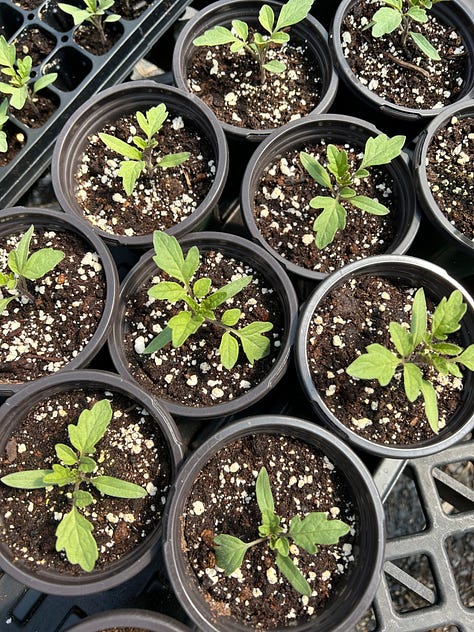
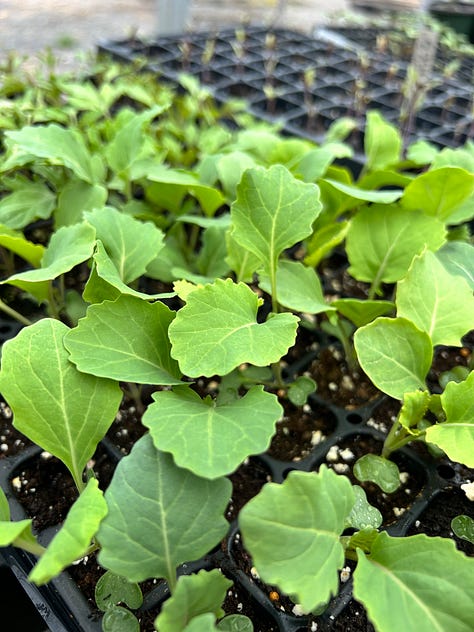
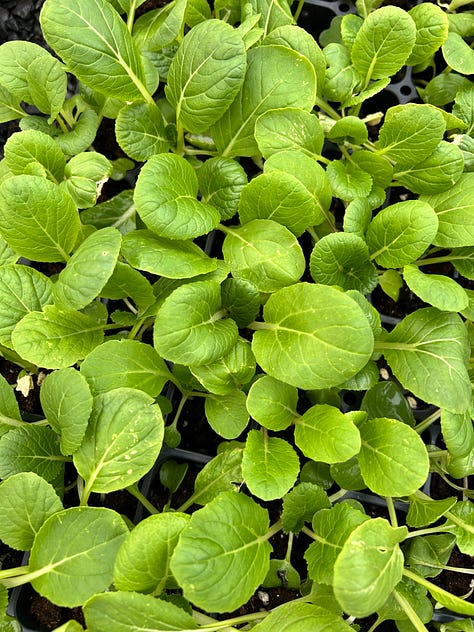
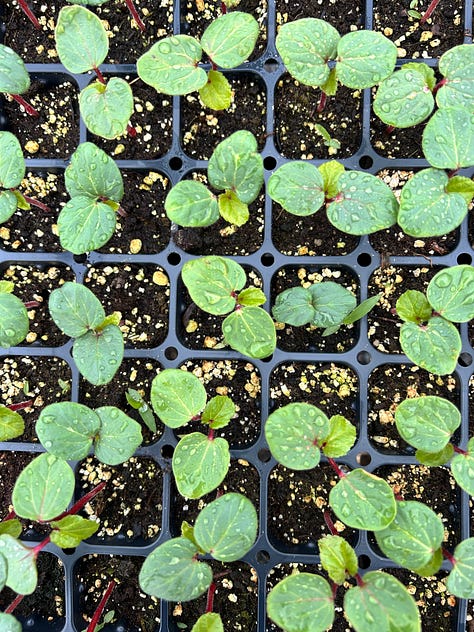
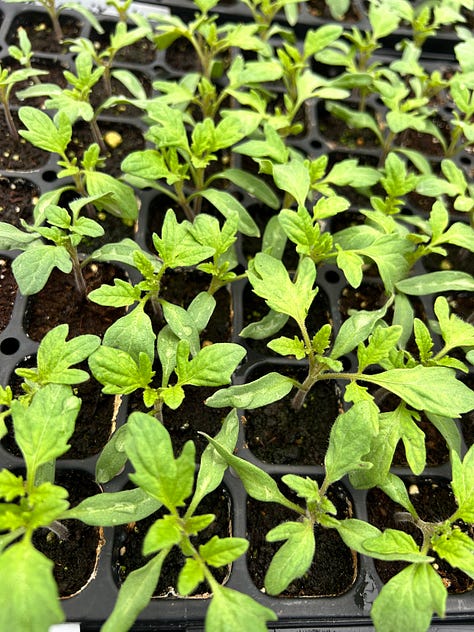

Philadelphia is the farthest inland I’ve ever lived. I’m refraining from using the word “landlocked,” which I’ve used in the past with a resentful connotation. I’m learning to appreciate my proximity to freshwater, my location in a place that’s witness to (and nourished by) creeks and streams and rivers making their journey to the sea. This past week has been rainy and soggy and I am reminded that the sky, too, is a body of water, as am I.
I miss the ocean whenever I’m not near it. In some ways, Star Apple Nursery is my attempt to bring the ocean to Philadelphia. The various iterations of Star Apple emerged from my seedsaving work with peppers from Jamaica and the Philippines. As I learned more about the botanical histories and foodways of the islands where my parents were born, I also encountered entanglements and resonances between them. I learned about the shared use of plants like okra and hibiscus, lemongrass and moringa, and the ways this food and medicine had arrived in each place through climate patterns, trade routes, and oceanic circuits of slavery, indenture, and colonialism. Saltwater runs through everything I try to put into the world, and my work growing plants in this city 60 miles from the ocean is no exception.
In its fluidity and formlessness, the ocean laughs at our attempts to impose made-up boundaries on the earth. From the Monsoon Exchange to the Middle Passage, the ocean illuminates how and why seeds traveled throughout the colonized world. Because of this, the ocean also makes it clear that contemporary understandings of region and nation will always be insufficient ways of relating to plants.
Variously, I have described the project of Star Apple Nursery as stewardship of Jamaican and Filipino crops, Caribbean and Southeast Asian crops, tropical crops and seasonal staples, and Asian/African diasporic crops. All of these are true, and yet none of them can fully capture the expansiveness of how humans and plants have interacted throughout time. These terms are shorthands, drawing on colonial nation-state designations and ideas about geography created by academic disciplines like area studies. Like many others, I employ these words in an effort to communicate widely, using the flawed tools I have at my disposal. These words help me correctly reference certain culinary and agricultural traditions, but because of the ways our maps were created—a collection of borders and names documenting the imperial expansion of Europe and the U.S.—they will never be exactly right. I feel okay with the way language fails here. The seeds I am most interested in have journeyed through waters known as the Indian Ocean, the Atlantic Ocean, the Caribbean Sea, the Pacific Ocean, and the contested West Philippine Sea. All of these waters flow into each other; no one owns the ocean.
Saltwater invites me to be curious not only about a plant’s origin and provenance, but about the flows of labor and money and wind and tide that have moved it through space and time. I was taught to categorize and label, but the ocean reminds me to ask more patient questions: What movements of bodies have determined the path of these seeds? What are the names and borders they defy? What waters have carried them here?
This week’s song: “Coconut Mango” by Arrangement
This week’s soothingly dry and very useful Youtube video



